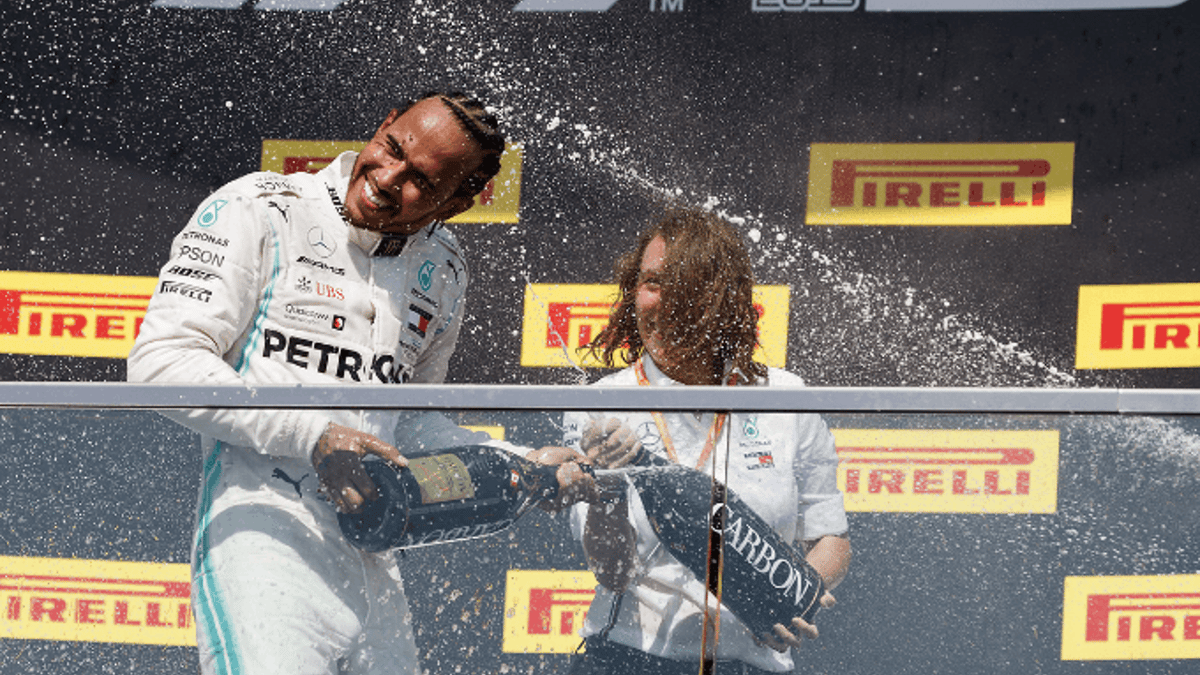Mastering Betting on Formula 1 Podium Finish Market

If you are new to Formula 1 betting things can be confusing. There are loads of markets to choose from but, for the most part, our inherent mind-set always leads us to trying to identify a race winner.
In truth that is not that difficult to do. Since the start of 2014, when Formula 1 cars were converted from 2.4 liter V8 vehicles to the more environmentally friendly 1.6 litre V6 hybrid they use today, Lewis Hamilton in his Mercedes has won more than half of the races that have been staged. His teammates during this period, initially Nico Rosberg and latterly the less successful Valtteri Bottas, have averaged out around the twenty percent wins-to-drives ratio.
This has left limited opportunities for their rivals, primarily the Ferrari and Red Bull teams, who have picked up the pieces when Mercedes have faltered. No other team has won a race since the start of the 2014 campaign.
"Podium Finish" Market Explained
Consequently, selecting drivers from other teams to finish "on the 'podium" gives you a better chance of cashing-in on a rank outsider with the top New Jersey sportsbooks and top Pennsylvania sportsbooks. It is no different to backing a racehorse to finish in the frame whilst accepting the favorite looks an inevitable winner.
But Formula 1 is closer related to jumps racing than the flat variety meaning there can be fallers (crashes in this instance), unseated jockeys (mechanical failure), hampered and carried out horses (punctures) even some contenders being disqualified for taking the wrong course. These variables make the prospect of a big-priced driver collecting some silverware all the more viable.
Car and Driver Form
Driver form is clearly a major factor in motorsports betting as it is closely related to confidence. But the form of the car on the type of circuit it is about to race on is equally, if not more important.
No two Formula 1 race circuits are the same, in fact they are all vastly different. There are tracks which feature long straights where lap time is gained by high speeds – Monza in Italy and Spa in Belgium are two examples – and there are tight circuits where the time advantage is gained by sure-fire tire grip while cornering. Examples of these include Hungary and Monaco.
The technical term for a fast track is a "low downforce circuit" and the slower tracks with tight corners are known as "high downforce". The reason being, cars require more or less downforce, created by their wings, to go fast through the air at speed or to be nailed to the circuit around corners. A car’s wheelbase (the distance between front and back wheels) is another factor which helps a car with cornering at speed.
Track Analysis
So if you are trying to identify a podium finisher, particularly one at a big price, you need to assess the driver’s car’s likeness for the circuit’s characteristics. The gap between the best and worst cars is magnified at the circuits with long straights and sweeping bends. Bahrain, for example, regularly sees just six cars complete the race on the lead lap.
But at Monaco in 2019, just ten seconds separate the first five home and that was no flash-in-the-pan. It's a slow-speed street circuit where overtaking is near impossible, so it is conducive to competitive racing and if/when you do see a treble-digit driver sneak on to the podium this circuit is one of the more likely venues where it will happen.
The Azerbaijan Grand Prix is also staged around a wall-lined street circuit with tight corners, and in both 2016 and 2018, +10000 shot Sergio Perez managed to pinch third spot. In-between those two years Lance Stroll defied win-market odds of +30000 to also snatch a bronze medal.
Check Out: Unibet Sportsbook For Free Bets and Welcome Bonus.
Timing Your Bet
Timing your Formula 1 bets is of vital importance. Markets normally open on the Monday afternoon prior to the race weekend and the race weekend begins on Friday with two very informative practice sessions. There is a third practice session on Saturday followed by the decisive qualifying session. Sunday is race day.
Odds will fluctuate dramatically between Tuesday and the completion of the first practice session and anyone who takes their Formula 1 betting seriously will tell you the earlier you examine all the F1 betting markets, the more likely you will find a stand-out price discrepancy.
There is no substitute for studying the stats when it comes to Formula 1 betting, so make sure you know each circuit just as well as the drivers.
Be first to get our exclusive sports offers!
Join today to stay up to date on your states gambling news and offers.








